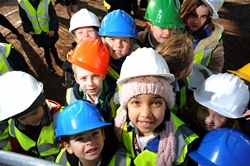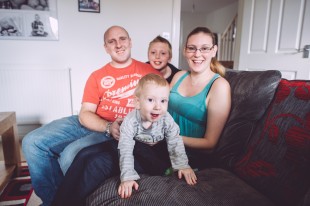The Government’s spending review set some ambitious targets – and rightly so. But to meet the commitment to one million new homes by 2020 we will need to find creative ways to get houses built.
One way is by prioritising large housing sites – that’s developments with more than 1,000 homes. However, developments of this scale can present significant challenges, meaning some are stalled or just not building quickly enough.
For the last five years I have led the HCA team working on the development of Cranbrook near Exeter, a new community which - when complete - will house around 20,000 people in new homes. Watching it transform from empty fields to a vibrant community has been hugely inspiring, and shows just what can be done when partners share the same ambitious vision.
But it’s not been easy. When you’re creating a brand new place for thousands of families - with new roads, new schools, and a brand new town centre - there are inevitably a whole host of potential pitfalls to look out for. And it’s not just about building homes; we have a responsibility to create places that people are proud to call home.

So if you’re about to embark on a major project - whether as a developer, a local authority, a housing association or a local community supporter - here are four important themes to consider:
Foster strong local partnerships - Competition and distrust between rural areas and cities can often hold back development. One of the great successes at Cranbrook is the strong relationships between all our project partners, which has helped ensure a balanced approach to planning. Encouraging partners to set aside their differences and focus on what’s needed to create a successful community is crucial. It’s much more than just a marriage of convenience, it’s about working together to make things better.
Prioritise infrastructure and support services – Early infrastructure investment and intervention can unlock development sites that may otherwise stall or slow down. At Cranbrook, large sites infrastructure funding from the HCA was a vital hook for generating further private sector investment.
This funding c reated a place that was ready-made for private sector building – with a school and facilities that created a growing community before we had even finished phase one of house building. This funding made Cranbrook an attractive and, crucially, safe investment option.
reated a place that was ready-made for private sector building – with a school and facilities that created a growing community before we had even finished phase one of house building. This funding made Cranbrook an attractive and, crucially, safe investment option.
Without this funding, I don’t believe we’d have seen the new community progress at such a rate (500 homes per year).
And it’s not just about developing at speed. A thriving community should be at the heart of a successful new place, and putting the right infrastructure and support services in place in advance - whether it’s education, health or community facilities - means new residents have access to the things they need, avoiding any unnecessary burden on already oversubscribed existing facilities.
Strive for quality and excellence – With a strong local partnership on board, you can push for creating a place of real quality and excellence. At Cranbrook, partners wanted to see district heating incorporated to power all the houses and employment facilities, they wanted it to be low carbon and they wanted to ensure that the town would be self-supporting. The challenge of making sure such ambitions are met requires a real concerted effort from all partners. In Cranbrook, these high standards have really helped to set the development apart, and the district heating is already saving homeowners’ money.
 Nurture the community as it develops – Everything should lead back to the community - after all, it’s local people who will ultimately determine whether a scheme is successful or not. At Cranbrook, there are currently around 1,300 homes built and they already have their own elected town council made up of local residents, a multi-faith minister to meet the faith needs of the community and have set up a regular produce market.
Nurture the community as it develops – Everything should lead back to the community - after all, it’s local people who will ultimately determine whether a scheme is successful or not. At Cranbrook, there are currently around 1,300 homes built and they already have their own elected town council made up of local residents, a multi-faith minister to meet the faith needs of the community and have set up a regular produce market.
By taking an active role in helping to develop these community structures, we’ve been able to have a huge impact on community spirit. So whilst we must continue developing large-scale projects - to meet the growing demand for homes - we also have to build the foundations of strong communities. And remember the people behind the numbers.
Keep in touch: Sign up to email updates from this blog, find us on Twitter and follow our LinkedIn page for more expert comment.

1 comment
Comment by Ian Hembrow posted on
What an excellent and well-argued piece. I hope that policy makers and funders are listening to this wisdom...
While it's essential that we ramp up housebuilding rates to tackle the UK's chronic under-supply of homes, we must learn from history and remember people, families and communities as we do it.